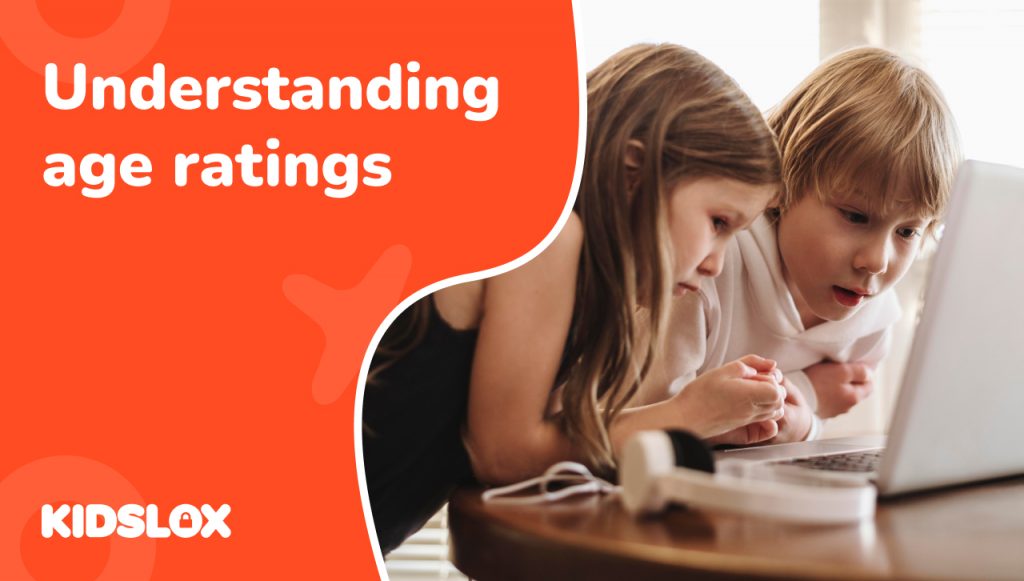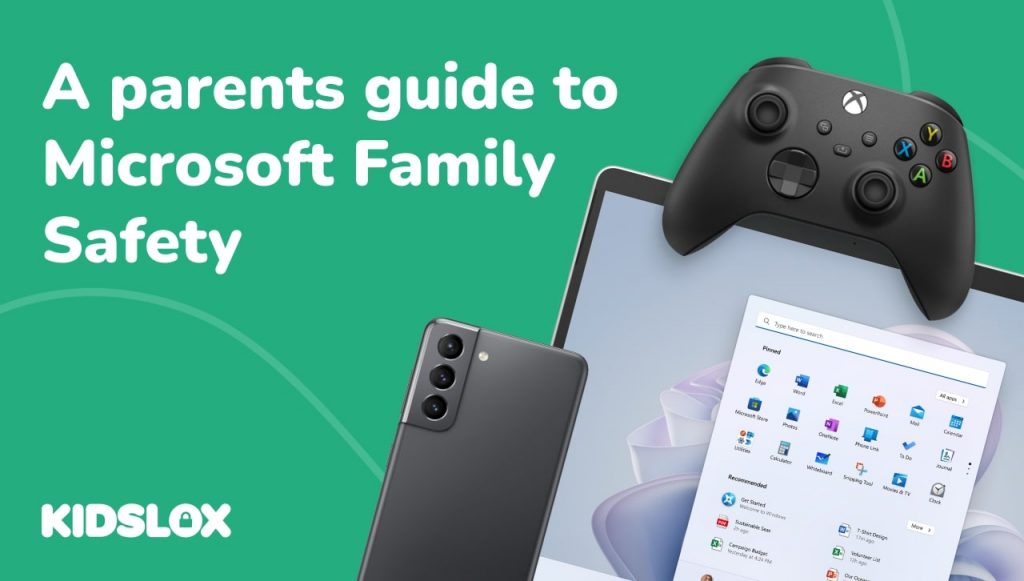In the ever-evolving landscape of entertainment and digital content, the importance of age ratings can not be overstated. As our screens offer a diverse array of TV shows, movies, apps, online games and videos, video games, and more, understanding age ratings and how they help protect our children online is vital. Navigating the overwhelming amount of content available to our children can seem daunting for parents as we aim to ensure our children consume age-appropriate and safe content online.
This post will break down the ratings from various platforms and share additional ways to determine appropriate content for your children.
Age ratings are available for movies, apps on Apple and Android devices, and video games. It’s important to note that streaming services, like Netflix, do not require age ratings. Later in this article, we will cover ways to supplement the lack of age ratings and additional steps to ensure your children consume content responsibly and safely.
Movies
The most familiar ratings for most parents are those for movies. Since childhood, in the US we’ve seen the G, PG, PG-13, R, and NC-17 ratings (other countries have other, comparable systems).
As a reminder, G ratings are for all ages. PG stands for parental guidance suggested and notes that some content may not be suitable for children. PG-13 ratings remind parents to be strongly cautioned and that some material may be inappropriate for children under 13. The R rating is for restricted movies. Anyone under 17 is required to have a parent or adult guardian accompany them to watch in a theater. NC-17 movies are restricted to anyone under 17, regardless of a parent or guardian being present.
The goal of these ratings is to inform parents of the level of specific content in movies that parents may consider inappropriate. That content may include violence, sex, drugs, language, thematic material, adult activities, etc.
Video Games
The Entertainment Software Rating Board, or ESRB, is responsible for ratings for boxed video games. The ratings are based on the consensus of at least three specially trained raters. The raters collaboratively assess a game’s content and decide what rating should be applied. Ratings can be adjusted after release as ESRB raters play-test the game post-release to ensure accurate ratings. ESRB rater’s identities are secret to reduce influence from outside sources or major companies. Raters are also not allowed to have connections to the video game industry.
The ESRB ratings are:
- E- suitable for everyone
- E 10+- suitable for everyone ten and older
- T-suitable for teens
- M-mature 17+
Apple and Android Apps
Android apps use the ESRB rating system.
Apple age ratings are determined based on a questionnaire given to app creators. There are penalties in place if the questionnaire is not answered accurately.
The Apple age ratings are:
4+: Apps with this rating contain no objectionable content.
9+: Apps with this rating may contain instances of the following content that may not be suitable for children under the age of 9, including infrequent or mild cartoon or fantasy violence, infrequent or mild profanity or crude humor, and infrequent or mild mature, suggestive, horror or fear themed content.
12+: Apps with this rating may contain instances of content that may not be suitable for children under the age of 12 including infrequent or mild medical or treatment-focused content, infrequent or mild references to alcohol, tobacco, or drug use, infrequent or mild sexual content or nudity, frequent or intense contests, frequent or intense profanity or crude humor, frequent or intense horror or fear themed content, frequent or intense cartoon or fantasy violence, infrequent or mild occurrences of realistic violence, and infrequent or mild simulated gambling.
17+: Apps with this rating could contain instances of the following content that may not be suitable for children under the age of 17, including unrestricted web access, such as with an embedded browser, gambling, frequent or intense simulated gambling, frequent or intense mature or suggestive content, frequent or intense mature or suggestive content, frequent or intense medical or treatment-focused content, frequent or intense references to alcohol, tobacco, or drug use, frequent or intense sexual content or nudity, and frequent or intense realistic violence.
Streaming Services
As stated previously, streaming services currently do not require age ratings. However, in addition to understanding age ratings, parents have other options for ensuring all content consumed by their children is appropriate.
Start by establishing rules and expectations for your child to follow and have them understand and agree to those rules before allowing media consumption or time online. If your child sees inappropriate content on a game, app, movie, video, or TV show, they are more likely to come to you if they understand the expectations you have set for them. Keep communication open and honest.
We recommend co-watching as much media as possible. Play their games together. Watch movies and TV together. Know what your children are watching, playing, and doing online. If you are unable to co-watch, set up media zones in your home so that your child is not out of sight or earshot while viewing online content.
Using the standard parental controls on all devices and installing parental control apps like Kidslox sets another level of protection for your children. Parental control apps do so much of the work for you by automatically blocking content and notifying you if your child has viewed or has tried to view inappropriate content.
Utilize outside resources as much as possible. Don’t just rely on the age rating. Read parent reviews of apps, TV shows, movies, and other media. Use websites like Common Sense Media (CSM). CSM rates movies, TV, video games, music, apps, websites, and books. The CSM website gives in-depth reviews and their own independent ratings. There are even suggestions for discussions parents may want to have with their children regarding the reviewed media. CSM provides a detailed summary of what parents should know in categories like sex, language, consumerism, drinking, drugs, smoking, violence, positive role models, diverse representations, and positive messages. CSM has partnered with DISH Network and DIRECTV to include their age recommendations on their guide listings, too!
Join parenting communities that share your common goals. Talk to other parents and continue to stay informed. Join groups like The Net Safe Mom, which hosts monthly workshops and posts resources daily to keep parents informed.
Though the amount of media and content available to our children daily can seem overwhelming, multiple tools are at your disposal, ready to be used to keep your kids safe Online.
Kimri Crawford and Bayley Ramphal are the founders of The Net Safe Mom, an online initiative to educate and support parents in fostering healthy relationships between kids and tech. They invite you to join this community here.





